Stakeholder workshop: exploring new data and technologies to measure sustainability in agriculture
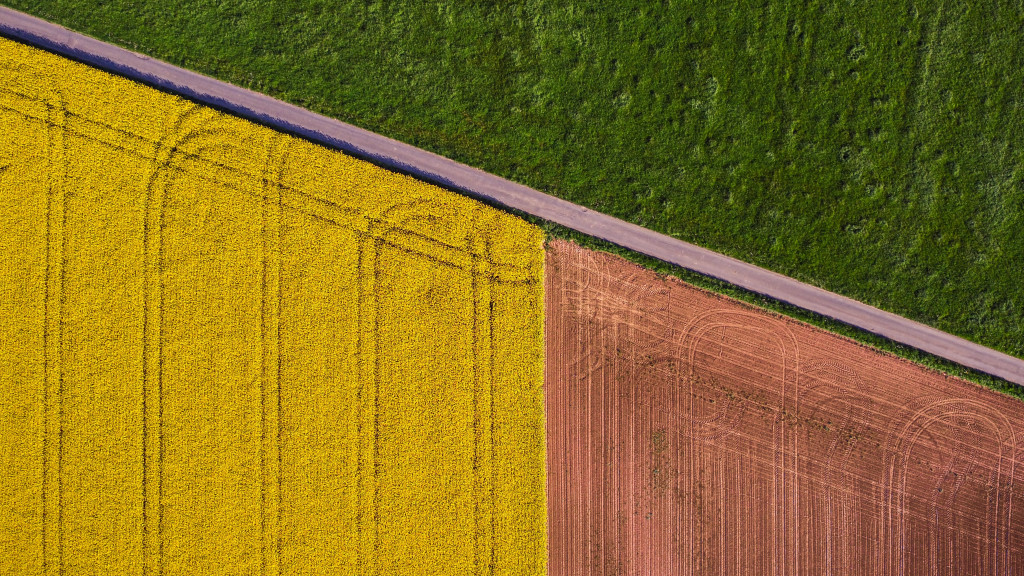

Stakeholder workshop: exploring new data and technologies to measure sustainability in agriculture
Earlier this month, the second MEF4CAP workshop invited stakeholders to explore the potential of technology to meet the new data needs in the context of future CAP monitoring and evaluation (M&E). During the event, the MEF4CAP team shared findings and key learnings from the first year of the project and presented some of the potential pathways to improve sustainability measuring in agriculture.
On Friday 4th March 2022, the MEF4CAP team hosted its second stakeholder engagement workshop, which aimed to facilitate discussions between experts, farmers, and policy-makers around the role of data and technology in agriculture.
During this two-hour online workshop, speakers and participants looked into the question of how technology and data sources can be best matched to improve the future monitoring and evaluation of the reformed CAP to ensure that the EU’s agriculture is economically, socially and environmentally sustainable.
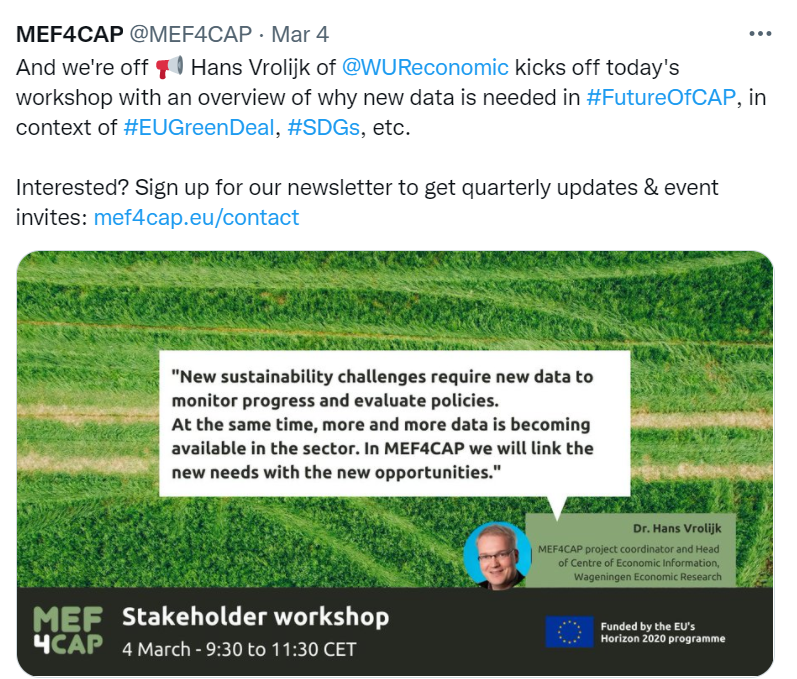
What the MEF4CAP project is about
The first presentation was given by Dr. Hans Vrolijk, MEF4CAP project coordinator and head of center of economic information at Wageningen University who gave a brief overview of the MEF4CAP project. He explained that, while there is no silver bullet or one technology alone that can address the new sustainability challenges in the agriculture sector, the MEF4CAP project’s ambition is to assess the potential of technological developments to address future M&E needs of different stakeholders. By connecting the need for more information with new opportunities, the project will develop a roadmap for future monitoring which harnesses the potential of technology while minimizing the associated costs and administrative burden for farmers.

Enhanced Monitoring and Evaluation for a reformed CAP
Next, Emma Dillon, economist and senior research officer at Teagasc presented a “wish list” of indicators which reflect the priority need for novel, relevant and updated socio-economic and environmental data. While the new performance-based delivery model of the CAP requires farmers and member states to deliver on a broad range of objectives, existing indicators are not always fit for purpose and need to be updated to fill current data gaps.
Attention was drawn to the fact that sustainability is now firmly embedded in the CAP and that environmental metrics are a key priority area and of great importance in achieving the Farm to Fork and Green Deal objectives. Moreover, data providers and administrators will face new obstacles but also opportunities as result of the new data requirements of the CAP: One the one hand, less technologically developed countries might be left behind and require substantial effort in upgrading their capacities to produce relevant indicators and adopt modern technologies– a cost and time intensive process.
On the other hand, there are emerging opportunities in the form of evolving technologies and new digital solutions and innovation processes which will help with agricultural data collection, processing, and management, allowing farmers to access various services (e.g. weather, farming and market information and knowledge)
While emerging technological solutions can assist, it is important to keep in mind that decisions to adopt sustainable farm practices are taken by farmers and thus require data usage in a way that returns benefits to farmers, too.
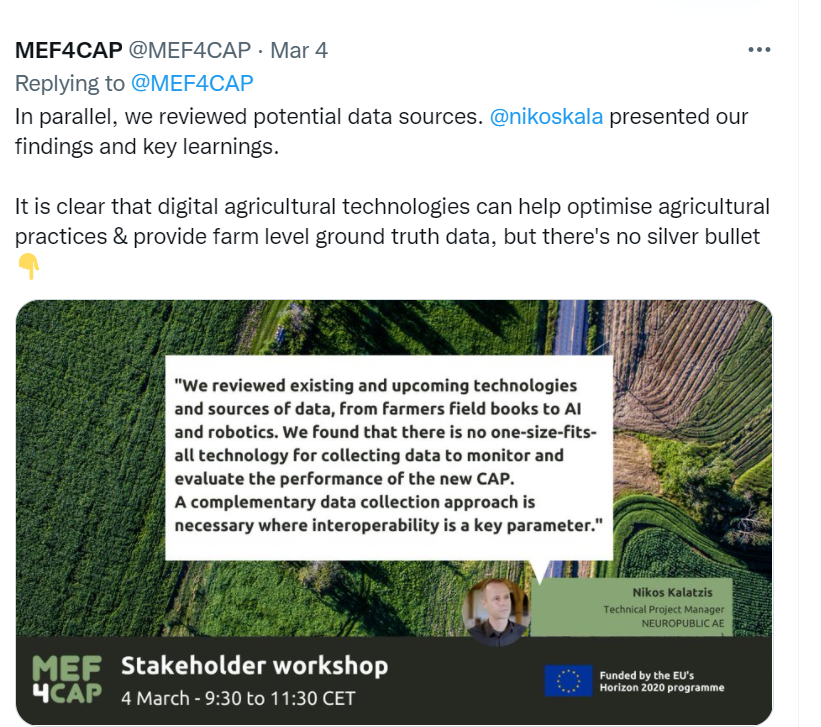
Promising technologies as new sources of data for monitoring and evaluation
The following presentation by Nikos Kalatzis, technical project manager at NEUROPUBLIC, provided valuable insights on the digital agricultural technologies useful for CAP M&E, such as field sensors, fam management information systems (FMIS), earth observation and field machinery – to name just a few. One of the key findings from the assessment of current ICT developments is that digital agricultural technologies can concurrently serve two objectives:
First, existing and upcoming technologies can facilitate the implementation of optimized and sustainable agricultural practices with benefits for farmers, climate and the environment. Secondly, technology provides farm-level ground truth evidence of applied agricultural practices, allowing for easier monitoring and decision making in agriculture.
For instance, farm management information systems (FMIS) can assist in optimizing the use of pesticides, fertilization, and irrigation inputs and at the same time generate relevant and important data evidences on crop type, water use or nitrates. The IoT-based data-driven advisory services allow farmers to collect site-specific data from various sources and generate advice on the optimized use of input with all the information being processed and collected in a centralized system. This in turn allows farmers to gain a better understanding of the characteristics unique to their field.
Nevertheless, there is no one-fits all technological approach to support CAP M&E. Instead, a combination of different technologies that can interact is necessary.
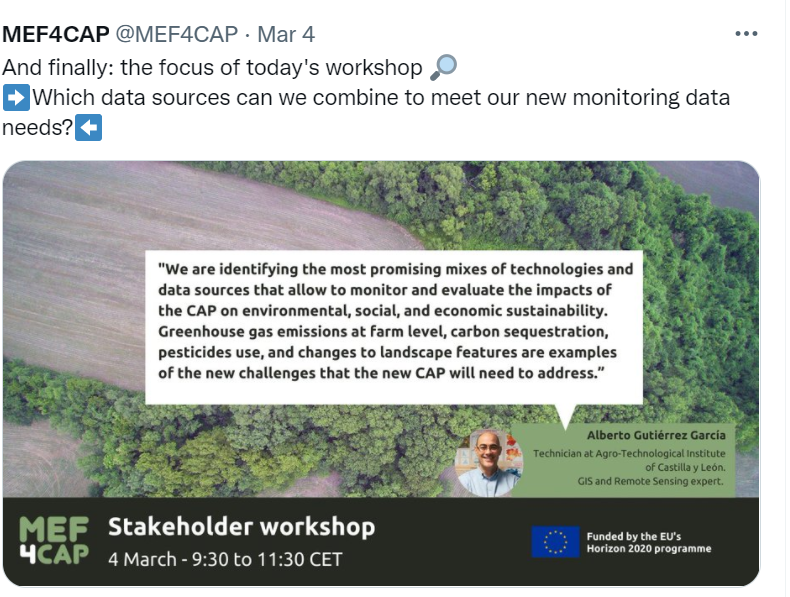
Current systems and future pathways
The last keynote presentation by Alberto Gutiérrez García, GIS expert and technician at Agro-Technological Institute of Castilla y León presented some promising pathways for the monitoring and evaluation framework for future agricultural policies. In this context, “pathway” refers to a combination of several data sources and/or technologies that ease the computation of the indicator’s metric.
In other words, future pathways describe the potential of a mix of ICT solutions to derive data for a specific indicator. Earth observation technologies, for instance, could derive land cover and biomass maps. These maps in combination with digital soil mapping technics, paddock management and crop monitoring systems could be used to estimate the amount of carbon sequestered in agricultural systems. This pathway would also need some additional requirements such as machine learning algorithms and scientific models to translate vegetation cover into CO2 equivalents.
Another example of pathway showed how data collected by machinery and the information stored in Farm Management Information Systems could be utilized to monitor the use of pesticides at farm level. Finally, the last example presented the potential of combining earth observation data and geo-tagged photos to monitor the evolution of farm landscape features and thereby help to prevent their further degradation.
Feedback from participants
Finally, participants were invited to provide their perspective on the potential and role of data and technology in the future CAP M&E.
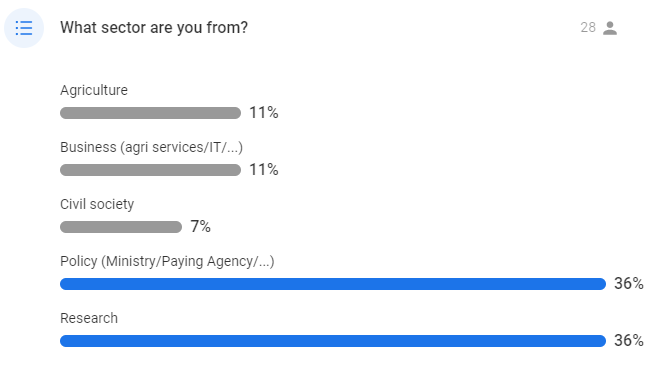
After a first poll to get an overview of who was in the audience (see results above), a second question asked participants what technologies are already used in their countries and regions to collect agri-environmental data. Here, participants named earth observation and remote sensing as predominant and trending technology (see results below).
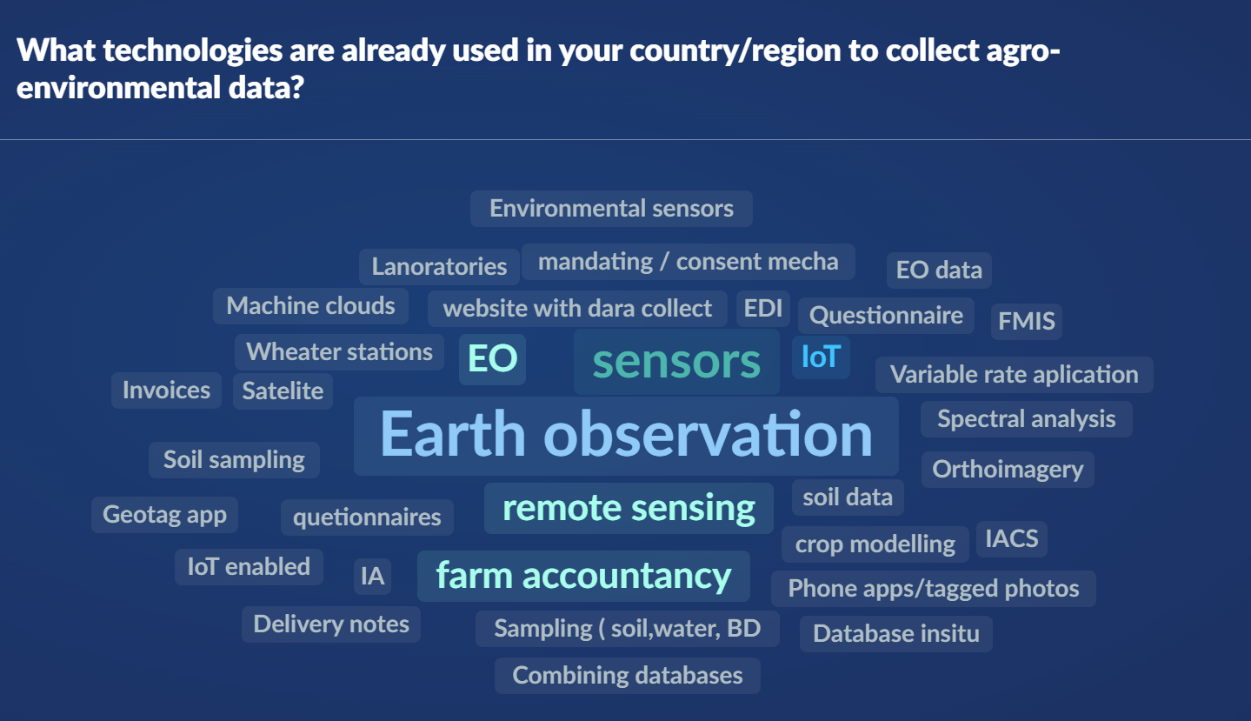
According to the audience, FMIS seemed to be a less favored technology. In general, it can provide a huge potential, but there are still some associated challenges, ranging from a limited number of farmers actively using the technology to the need to harmonize and synchronize a variety of systems that are covered by FMIS. Most importantly, however, farmers need to be willing to share data, meaning that the usage of FMIS must provide clear benefits for farmers such as reduced administrative burdens.
Concerns about sharing data and questions around privacy emerged as one of the big obstacles identified by participants. While farmers tend to be reluctant to share farm-level information with governments or other agencies simply on a voluntary basis, it was stressed that farmers should equally benefit from sharing their data. After all, technologies such as FMIS can offer farmers valuable advice and services too (e.g. early warning systems, precise and real-time decision making in farming activities to improve performance).
When asked what problems data providers (e.g. farmers) have encountered when collecting data, participants mentioned the lack of availability of historical data, harmonization and quality problems, required skills and time for training and the lack of clear benefits for farmers. Data users identified several difficulties related to precision, accuracy, accessibility, and reliability of data (see full answers below).
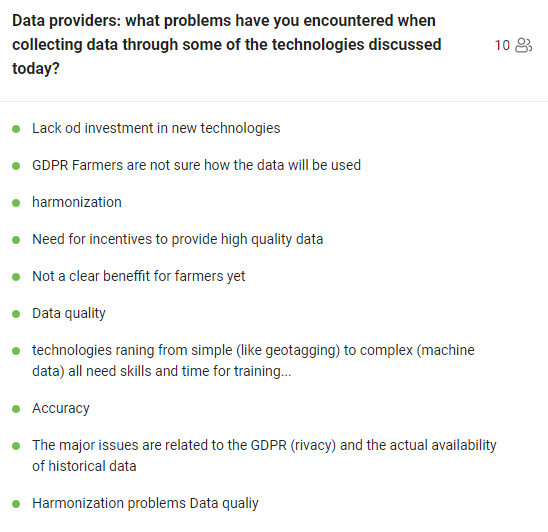
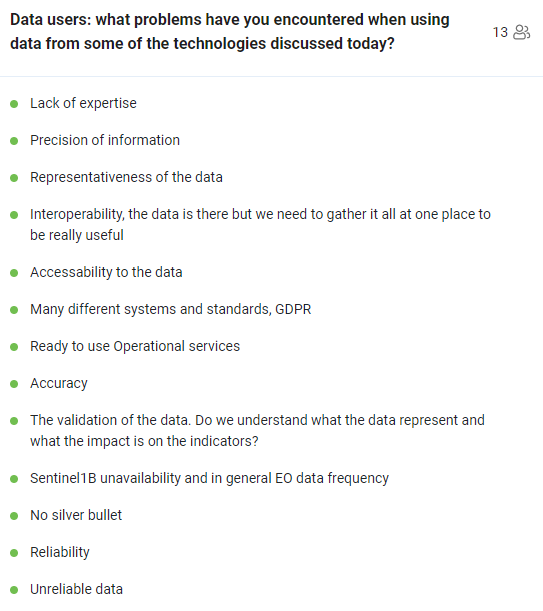
To conclude, the workshop demonstrated that there is a strong need for data to support monitoring and evaluation in agriculture. While promising new data sources and pathways to link them with data needs are emerging, there remain significant challenges for data providers and users regarding the application of digital technologies in the agriculture sector.